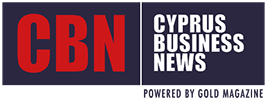The trigger for this article is undoubtedly the changes we see today around us and the main question at the business level when it comes to mergers and acquisitions is what role cultural compatibility play in the outcome?
First the focus is on the successful merger story, Disney-Pixar:
Pixar started as an independent company in 1986, and it has evolved continually: the acquisition by Disney in 2005 helped shape the future of the company. Both companies were in the same field and were operating at different stages of production. Their synergy has resulted in the production of smashing hits worldwide. Disney by acquiring Pixar was getting the pool of talent in both creative and technical terms and this was going to be a very valuable asset for Disney. The combined efforts and resources of Disney-Pixar can produce more movies in a year resulting in value addition for Disney. For Pixar, this deal was beneficial in terms of gaining monetary support from Disney.
The question arises: What made this merger successful and smooth?
The answer lies in the fact that the Corporate Culture of Pixar remained intact: HOW?
In most mergers, the dominant force imposes their culture, and this is the mistake that most companies do: In this case Disney accepted Pixar's t-shirt and blue jeans attitude as its strength. Disney accepted Pixar's old employment agreement and did not force its employees to sign a new one. Disney made a long list of promises. After a year, Pixar executives reviewed the list of promises and discovered that every promise had been kept. This reaffirmed the trust, and Pixar became more at ease doing things the Disney way. One simple aspect was that Pixar employees were allowed to keep their previous email addresses; By doing so, Pixar's image was not compromised. In exchange, Disney encouraged Pixar to make more than one film per year.
Another aspect of this successful merger at the cultural level was that both companies were able to highlight their values. The talented people of Pixar were valued and employed by Disney by accepting the employment conditions of Pixar; In addition, and what was a crucial factor of success is that the communication between the executive teams from both sides was permanent, transparent, and effective. This success story was largely due to the agreements held by both companies.
The other side of the coin was when the merger fails due to corporate culture clashing:
One example is the Hewlett-Packard and Compaq merger failure, although both companies had great and well-known products. The reasons are believed to be a difference in the way they were driven ,HP culture more aligned to looking at a consensus for decisions whereas Compaq had a sales-driven culture that emphasized rapid decision-making.
Another important merger failure is the merger of Mercedes-Benz manufacturer Daimler-Benz with America's third-largest car company Chrysler for $37 billion. When the deal closed on May 7, 1998, this transaction marked the biggest acquisition by a foreign buyer of any US company in history. The new company was called DaimlerChrysler AG, with Daimler's stockholders owning most of the shares. Sadly, this was another case of corporate culture clashing: Daimler-Benz was rumoured to be aggressive when telling Chrysler how things should be done.
Mergers make people anxious about their future: in most cases, the cultures of the two companies are not usually similar and in almost all cases, the culture of one company will change dramatically. These changes are not limited to a new name, logo or appointing a new Senior Manager but the main challenge lies in the core of an organization’s identity, purpose, and day-to-day work. Therefore, managing change in these difficult situations is a priority and it creates fear of uncertainty, and the outcome is difficult to predict. A focus on People as much as on other business aspects is essential in mergers or acquisitions, and if the incompatibility starts showing, it needs to be dealt with immediately.
Statistically and according to the Boston-based consulting firm Bain & Company, roughly 70 percent of all corporate mergers fail. Why the failure rate of mergers and acquisitions is high, ranging between 70% and 90%? Below are the most common failures:
- Mindset of Management is negative.
- Management of the deal is done by the wrong people.
- Incompatible economic engines.
- Customers are left out.
- Incompatible cultures.
- An inconsistent approach to integration.
How can we explain it on the Human side and what is happening at this front, that usually managers do not give so much importance for it?
We as Humans are biologically programmed to respond to threats and opportunities, through two channels that trigger emotions and, ultimately, actions:
* The Survive Channel
* The Thrive Channel.
For most people, company restructuring initiatives represent a threat, triggering a strong “survive” response in the brain resulting in fear, uncertainty, and anger. This is known as the “fight, flight or freeze” response and is directed at protecting oneself, and any attention to the real business problems and opportunities for growth is lost.
On the other hand, the Thrive Channel is associated with opportunity-seeking and positive mindset leading to innovation, creativity, and benefit from new opportunities.
Leaders should then encourage the Thrive channel by explaining, communicating, and answering questions that employees are having in their mind during a time of change:
“Why is this happening?” “What exactly is happening?” “What does this mean for me?”
Without transparency and clarity from leadership, self-generated answers can create more uncertainty and confusion, further amplifying the Survive Channel.
Throughout the merger process, there will be hard questions requiring honest answers for a successful merger. Everyone should feel comfortable asking all questions and feel good about the answers. Employees from both companies will need a strong leader to communicate confidence in the result. With change comes anxiety that can be calmed with a clearly communicated plan. -
Another crucial question to address is how well do the cultures of both companies match up and what will the impact be on the organic energy of the combined business? We need to remember, companies are people. They are not technology. They are not revenue. They are the collective ideas, spirit, and values of the individuals who carry the torch every day.
Another important factor to keep in mind when it comes to people, is Trust: We need to point out the key value of trust as a fundamental aspect of civility in personal and professional environments: Trust is achievable, even when if we disagree with someone. Trust and cooperation are possible if you begin from a core position of recognizing that others may have different ideas, different ways of accomplishing tasks, and different goals, processes, and strategies without labelling one as “right.” We can agree to respectfully disagree, Respect being a key value to always keep. Another important factor that can activate the Thrive channel is when a leadership culture allows employees to express their fears, frustrations, and help them manage their emotions in a productive way. This leadership culture creates opportunities for employees to share their feelings and this can contribute to reducing anxiety.
Actions to consider seriously to activate the Thrive channel:
- Creating a Leadership culture of performance that starts from top to all layers of the organization: A culture that focuses on opportunities and helps creating an environment filled with positive emotions thus encouraging the sense of belonging.
- An effective, proactive communication plan to ensure that employees understand the process: Communication must extend beyond emails and management meetings.
- Visibility, availability of the Leader to highlight better the opportunities and clarify the vision they have for the organization.
- Always explaining the reasons for restructuring, the process of making decisions, and the challenges and opportunities ahead.
- These messages and continuous communication and transparency help employees gain a better understanding of the change and how they fit into the future. Demonstrating fairness, consistency reliability and an authentic concern for people, anxiety will be reduced.
- Accomplish as a top priority the culture management to bridge the gap: work–life balance, employee empowerment, feedback styles, accountability, punctuality, respect, openness.
- Carry out workshops to address internal dynamics and agree on the necessary decision rights, governance, and interaction styles.
- Achieve new ways of working by kicking of series of workshops to role model the new ways of working in a consistent way.
- Make employees comfortable with the changes related to the new processes, policies, structures, new appraisal, and performance-management systems.
- Creating an Integration Management Team with an Integration Leader monitor the execution of its change-management program, along with the top team’s alignment.
- Be transparent and let integrity be your guide through the process of a merger or acquisition.
Tip of the day: All companies across industries need to have a Leadership culture to encourage and activates while at the same time minimize the effect of the Survive channel and by doing so allows the organization to innovate, grow and focus on the future.
Elie Wakil, Be.e Philosophy









